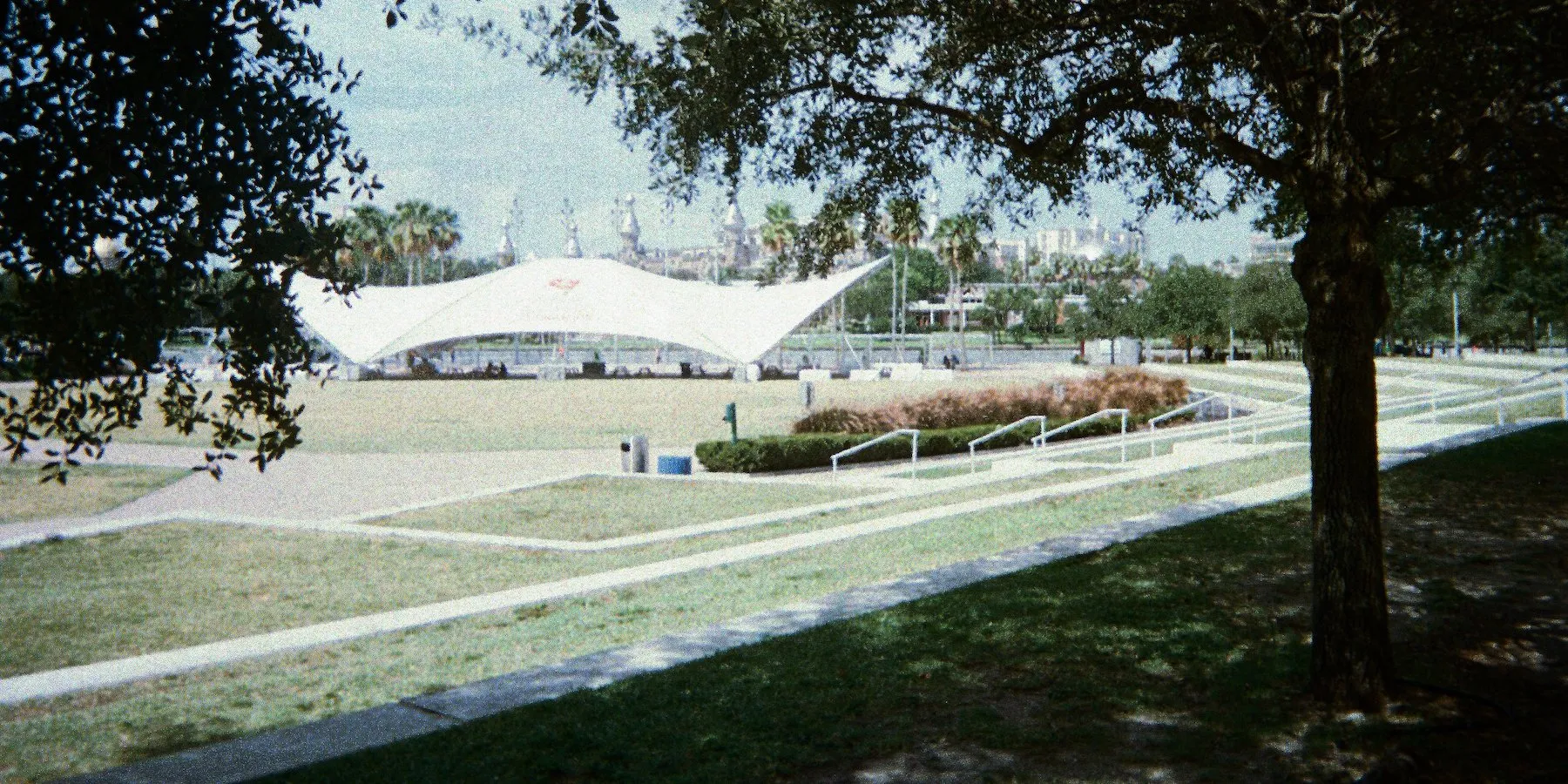Abstract
Shelter-in-place orders enacted during the 2020 COVID-19 pandemic were impossible to abide by for some persons without shelter in Tampa, Florida. This narrative considers themes of community, public health, and material conditions of humanity and dignity in a photographic investigation of life among persons for whom the prevailing adage “safer at home” did not apply.
Documenting Place and Health
The COVID-19 pandemic uprooted innumerable social and economic systems, including those supporting vulnerable populations. Quarantine measures limited the accessibility of food banks, shelters, and free clinics. Our neighbors experiencing homelessness had no home at which they could “shelter in place” when these guidelines were introduced. These realities exacerbated the health challenges such persons faced at baseline, including chronic physical and mental illness, sleeping in congregate environments, and living without reliable access to safe shelter, food and water, and health care. Moreover, the nature of human relationships has been redefined by the pandemic: communities are distanced, and subsequent anxiety has proved to be as insidious as SARS-CoV-2.
Photographs are powerful tools for community reflection because they viscerally convey unique perspectives and experiences.1,2 Image-based studies can unpack complex relationships between place and health.3,4,5 During July and August of 2020, a man we’ll call Liam—an African American man in his 40s newly experiencing homelessness—was given a 28-exposure disposable camera to document his responses to the question: How have your life on the street and the COVID-19 pandemic affected your health? Here, Liam shares his story of living on the streets during a time of social upheaval.
Liam
I was once married and working with a place to call home. The marriage slowly fell apart in 2018 and by that time I was living with my parents. My father told me on New Year’s Day 2019 that I had to leave and that the “clock was ticking.” With no job prospects throughout the year, I was left with one option. I am now homeless with no family support. Not that I am on hard core drugs (I liked to smoke pot). I have severed ties with my parents and sister. Even with the current pandemic, you would think they’d come to my rescue. While on the streets, I recently found God through some folks doing missionary work.
Figure 1. A Sidewalk in Tampa
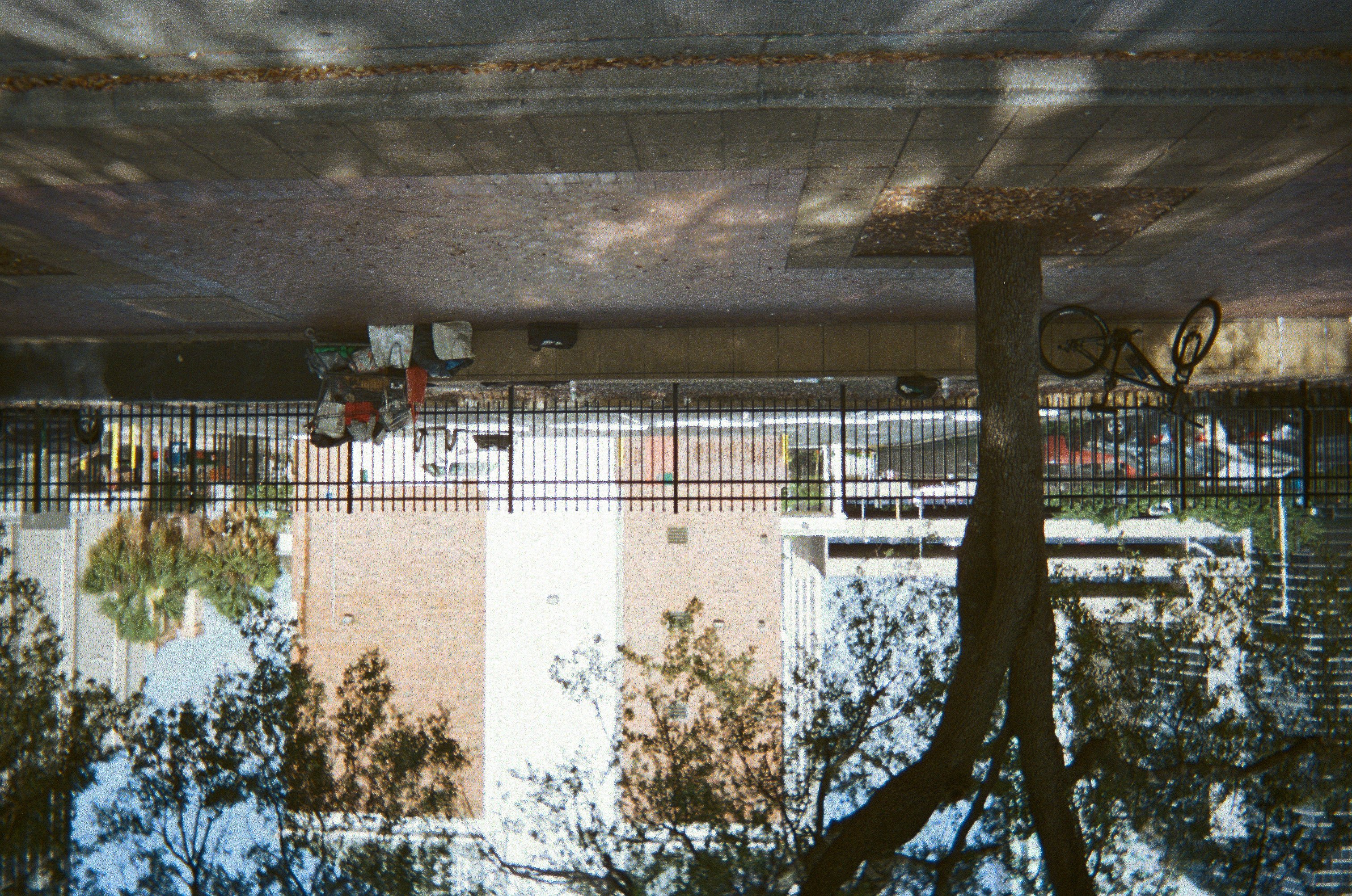
This is where I sleep at night and congregate during the day with my newly adopted “family.” Most of us don’t have jobs. We joke around and have fun. Some of us drink and some smoke cigarettes and cigars. I myself was never a cigarette/cigar smoker, but the last 2 months out here in downtown have been stressful. In order to cope I have been smoking cigarettes and cigars.
Figure 2. “Shower and Empower”
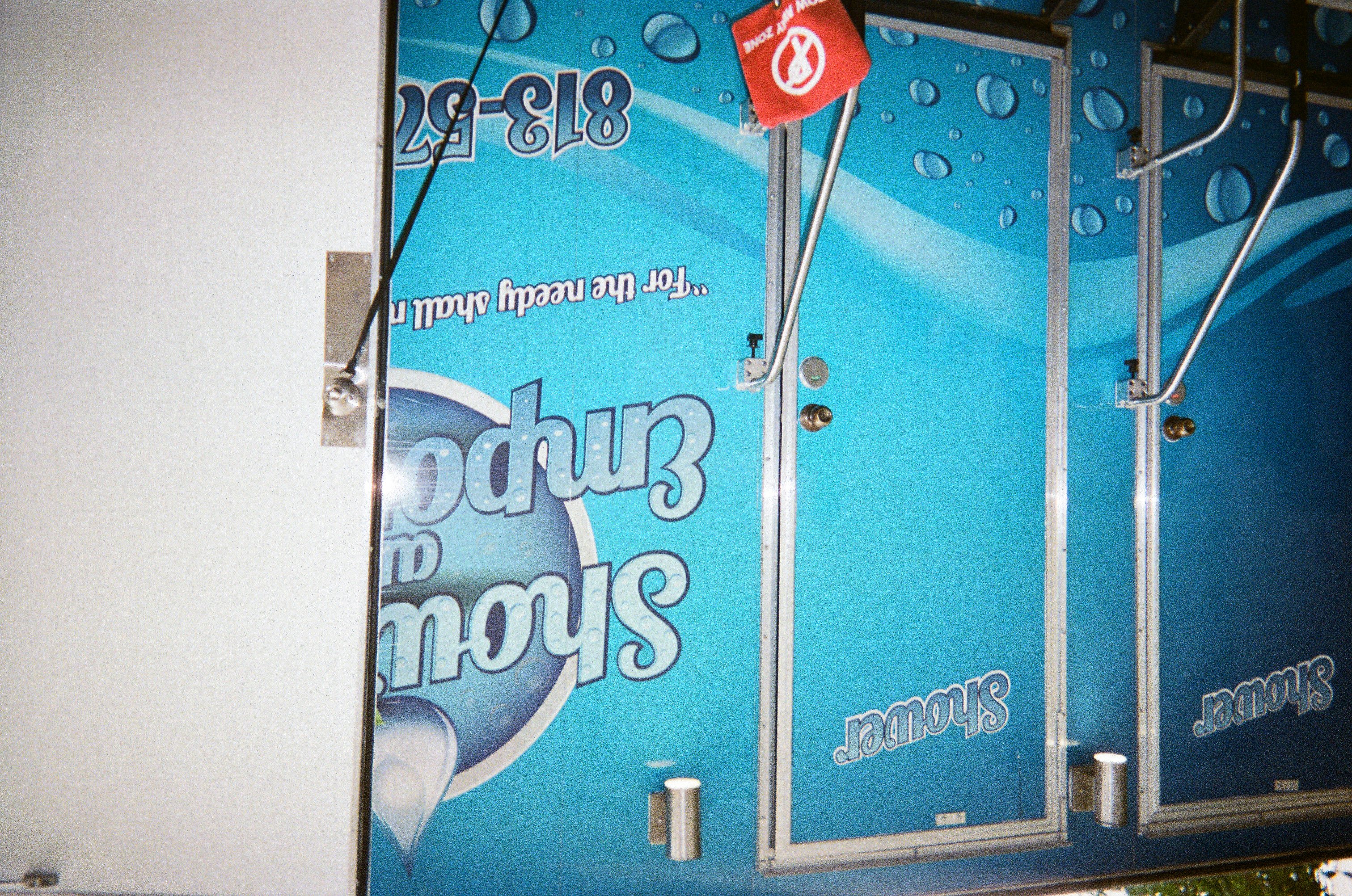
Every 2-4 weeks Presbyterian Church offers showers to the homeless. It’s a small, mobile shed with 2 showers and a washing machine/dryer. You get a 10 min time limit, so you have to move quickly. It provides a temporary solution to going without a daily shower. The list is very long. Somewhere between 25 to 45 people. I’ve done it twice, but it’s so hot the freshness doesn’t last that long. Although, it is refreshing.
Figure 3. Independence Day
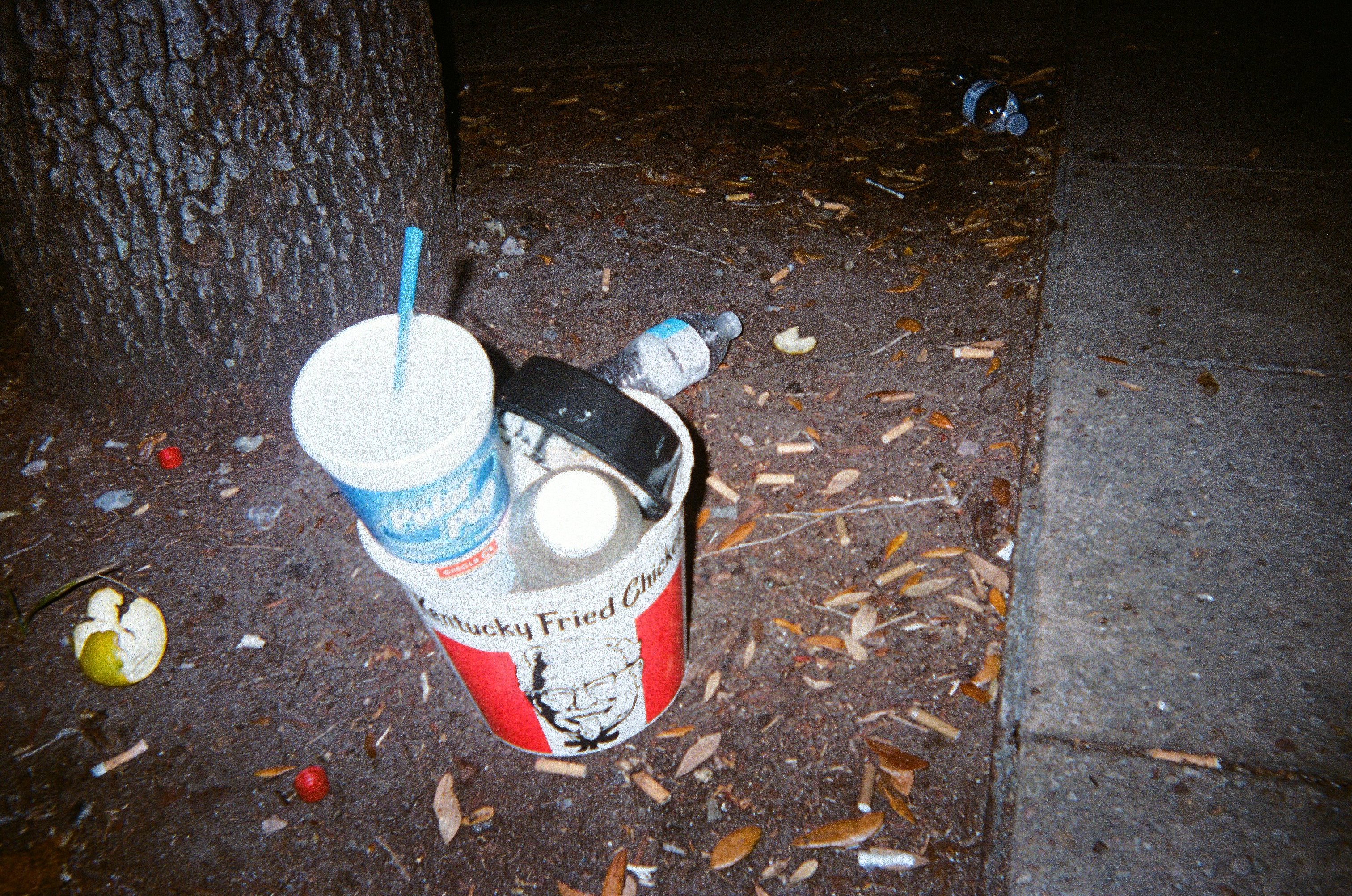
On the 4th of July to the 5th wee hours someone rewarded us with KFC [Kentucky Fried Chicken]. It really came at a good time, most of us were still hungry. Simultaneously, another homeless individual brought me water and 2 slices of pizza.
Figure 4. Summer Cookout
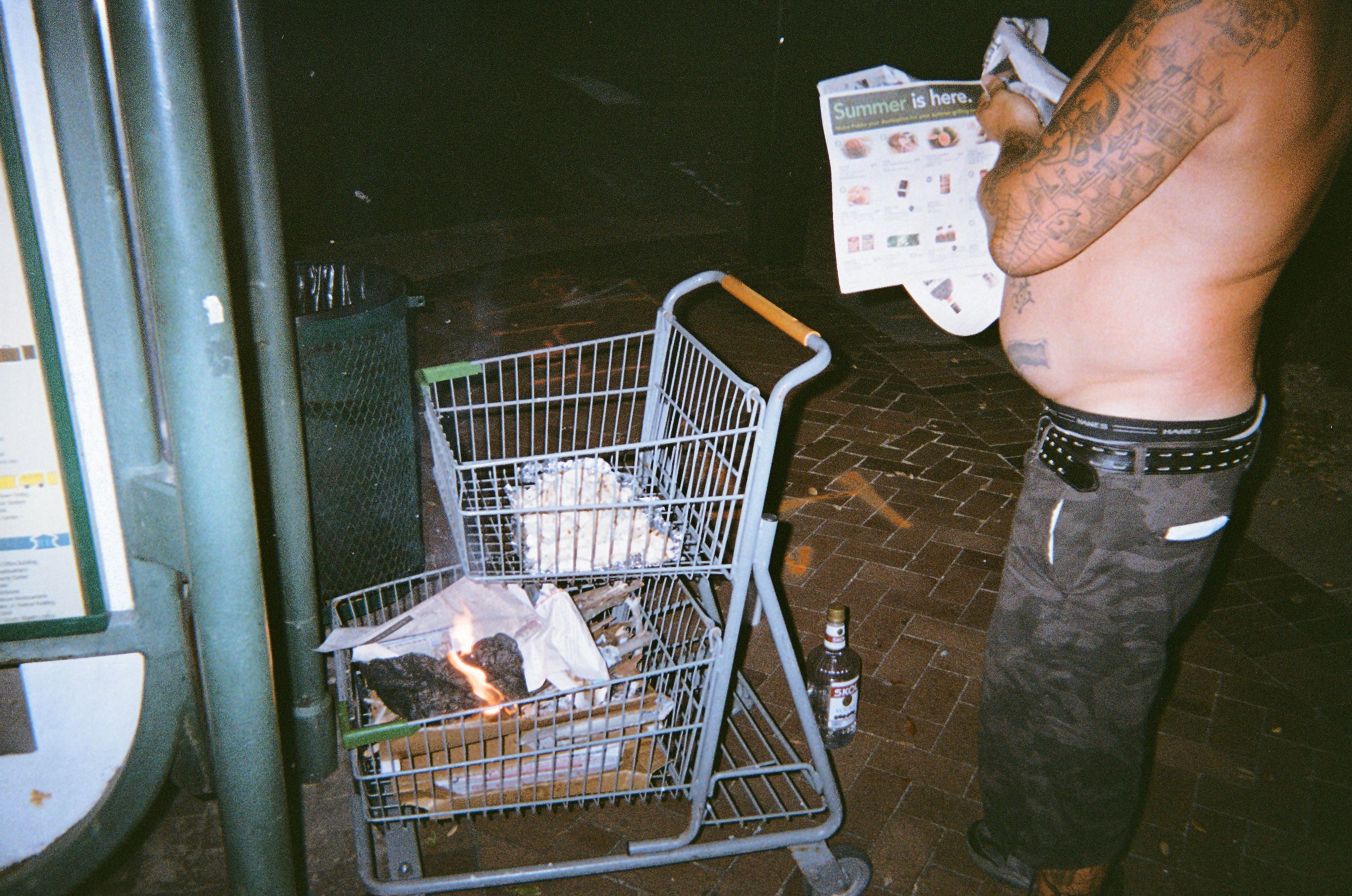
One of our associates on Marion St brought back a box full of chilled/frozen food. At 10:45 at night we had no way to cook anything. Someone (myself) got the bright [idea] to flip a cart on its side, add the burning fuel underneath, and cook on it on the cart grates. We did not have to do that as it turns out, one of the shopping carts had 2 tiers. We could light the fire on the lower tier and cook the food on the top tier. After starting the fire, officers in the parking lot noticed the flames rising out of control. They approached the makeshift hobo grill and 2 of my comrades. The grilled chicken came out a little warm with vegetables and cheese.
Figure 5. Curtis Hixon

This is Curtis Hixon Park. This is one of many places homeless people can charge their mobile devices. Other homeless people use it to consume illegal drugs. Some people use it to get drunk all day. Basically, Curtis Hixon is a sanctuary for the homeless during the daytime. Amidst COVID-19 and certain public buildings being closed the only place to seek cooler shading is the Tampa Bay Buccaneers Foundation tent. This heat wave has caused a lot of heat strokes due to lack of cool water. The only restaurant providing cool, free ice water is Four Green Fields. The staff for the most part has been quite generous.
Building Community Consciousness
Liam’s photo narrative illustrates that the human experience of COVID-19 has been as universal as the coronavirus itself. In “A Sidewalk in Tampa,” Liam shares how he coped with the synergistic stresses of homelessness and the pandemic—psychological burdens shared by many as the social effects of COVID-19 persist. Public parks, as depicted in “Curtis Hixon,” also epitomize the community spaces and connections lost to the pandemic. Yet parks also symbolize the dissonant experiences different populations have faced since January 2020. Although playgrounds for some, parks are crucial lifelines for persons experiencing homelessness. As they deprived us of normal community practices, pandemic quarantine policies emphasized the importance of belonging for many; however, social distancing reinforced the dehumanizing effects of social exclusion for marginalized groups. While the daytime scene of “A Sidewalk in Tampa” conceals the nighttime camaraderie Liam shares with his “adopted family,” the practice of visualizing Liam and his friends’ socialization is crucial to humanizing homelessness.
Moreover, COVID-19 elucidated myriad ironies and inequities of the “support systems” established to support at-risk populations. “‘Shower and Empower’” and “Independence Day” are poignant examples of this unveiling. The blue color in the former is bright in its promise of cool refreshment, a reprieve from Tampa’s smothering humidity. Simultaneously, we are compelled to ask if a rushed 10 minutes for personal care is truly empowering. Then consider the paradox of an unsheltered Black man receiving a “reward” of a KFC bucket on the Fourth of July. Smiling up at the camera in “Independence Day” is Colonel Sanders, KFC’s mascot in the style of its founder, Harland Sanders, a running mate candidate of Alabama segregationist George Wallace in his 1968 presidential campaign.6 Contextualizing this image within the summer of 2020—hot with domestic and global turmoil that was amplified by George Floyd's murder and its consequences—imparts the gravity of how the year’s provocations and tensions further destabilized the lives of vulnerable populations.
Top-down misunderstanding of community members’ needs is further exemplified by the shopping cart-qua-grill story depicted in “Summer Cookout.” Some well-intended gifts (in this case, frozen food) reveal fundamental misapprehension of actual need. This tension is captured in the contrasting symbolism of “Summer Cookout.” Even though the man in the photo is “grilling,” a quintessential American summer pastime, the enthusiasm of the grocery store ad denoting “Summer is here” feels out of place on the dark street corner.
Furthermore, the communal vodka in “Summer Cookout” contrasts with efforts to minimize COVID-19 transmission. Throughout 2020, face covering mandates were introduced across the country; such an order was implemented in Tampa in June 2020.7 Although a necessary public health measure, mask mandates compounded the ostracization of homelessness because of access, affordability, and education inequities. While masks quickly became symbols of public conscientiousness and personal virtue in many circles, they exacerbated the invisibility that blankets homelessness. A face covering ostensibly dehumanizes its wearer because we cannot appreciate their full personhood. This phenomenon disproportionately affects the well-being of vulnerable individuals compared to that of more integrated and accepted members of society.
Liam’s photo narrative reveals the importance of the plurality of experience within our communities and reflects the inadequacy of our public health infrastructure. His reflections illuminate the opportunity that exists to improve the health care we provide to vulnerable populations: care frequently overshadowed by flashier innovations and expansion.
Social Distance, Exclusion, and Support
Communities have been dismantled by COVID-19 social distancing requirements, leaving their members lonely and deprived of human interaction. Now, we face questions about how to strengthen our community partnerships and service delivery streams. How can we address social exile and socioeconomic exclusion as negative health effects of infection control? How can we reimagine city infrastructure to better support the health of the entire local population? How can community members support one another—including persons experiencing homelessness—from a distance of 6 feet? Embracing “nothing about us without us”8 can help nourish empathic relationships and improve health care for patients across all social strata, during and after the pandemic.
References
- Wang CC, Cash JL, Powers LS. Who knows the streets as well as the homeless? Promoting personal and community action through Photovoice. Health Promot Pract. 2000;1(1):81-89.
-
Liebenberg L. Thinking critically about Photovoice: achieving empowerment and social change. Int J Qual Methods. 2018;17(1):1609406918757631.
- Fast D. Dream homes and dead ends in the city: a photo essay experiment. Sociol Health Illn. 2017;39(7):1134-1148.
-
Vásquez-Vera H, Palència L, Magna I, Mena C, Neira J, Borrell C. The threat of home eviction and its effects on health through the equity lens: a systematic review. Soc Sci Med. 2017;175:199-208.
- Bukowski K, Buetow S. Making the invisible visible: a Photovoice exploration of homeless women’s health and lives in central Auckland. Soc Sci Med. 2011;72(5):739-746.
-
The campaign: George’s general. Time. October 11, 1968. Accessed July 24, 2021. http://content.time.com/time/subscriber/article/0,33009,902367,00.html
-
Hillsborough County Board of County Commissioners, Florida. Order of the Hillsborough County Board of County Commissioners Amending the Wearing of Protective Face Coverings Order as Previously Amended on July 6, 2020, August 14, 2020, and December 16, 2020. January 21, 2021. Accessed April 10, 2021. https://www.hillsboroughcounty.org/library/hillsborough/media-center/documents/bocc/covid/brorderdoc20-0835---meeting-date-8-13-2020---meeting-type-bocc-special-agenda-item---n-a.pdf
-
Charlton JI. Nothing About Us Without Us: Disability Oppression and Empowerment. University of California Press; 2000.
